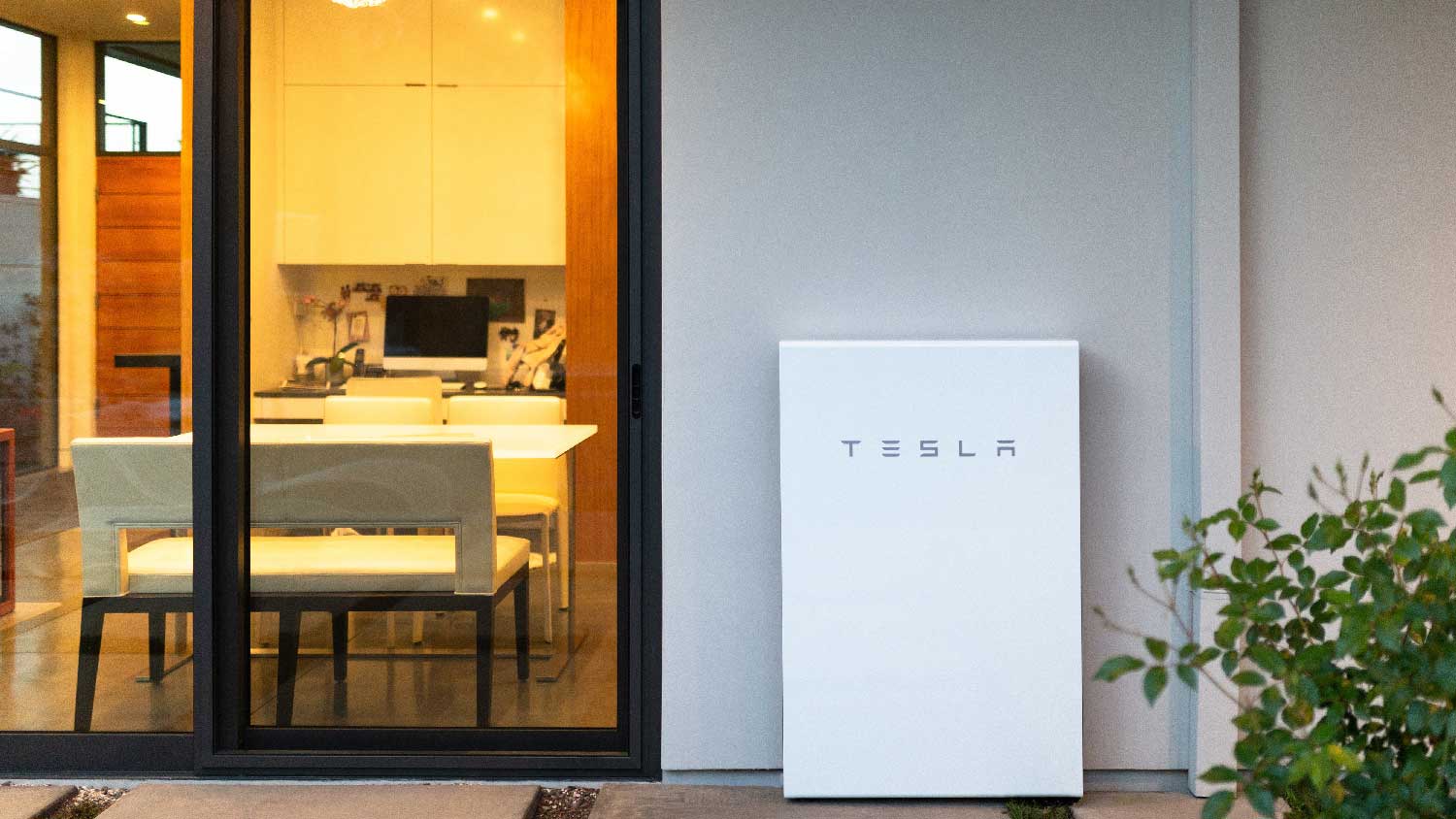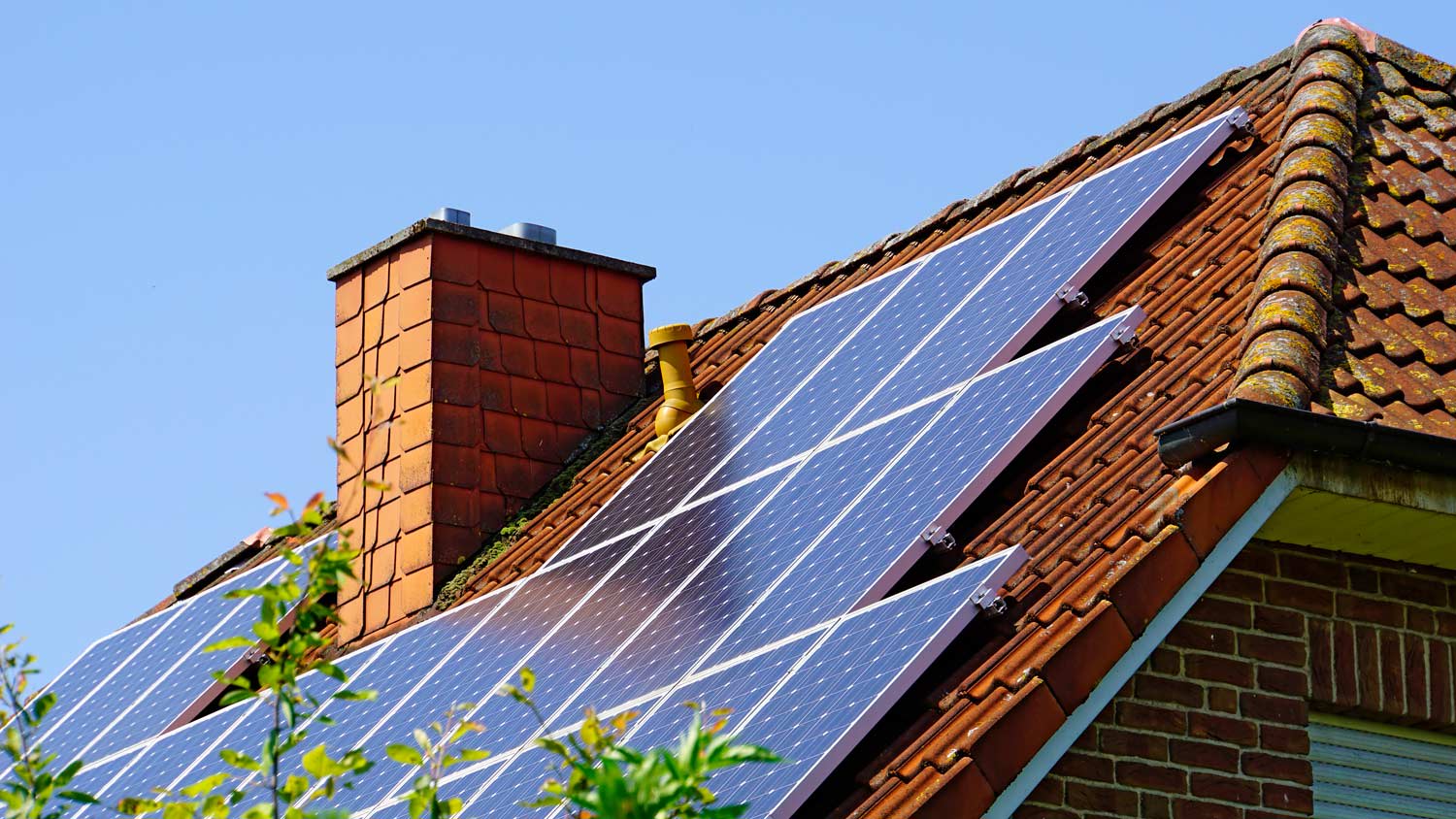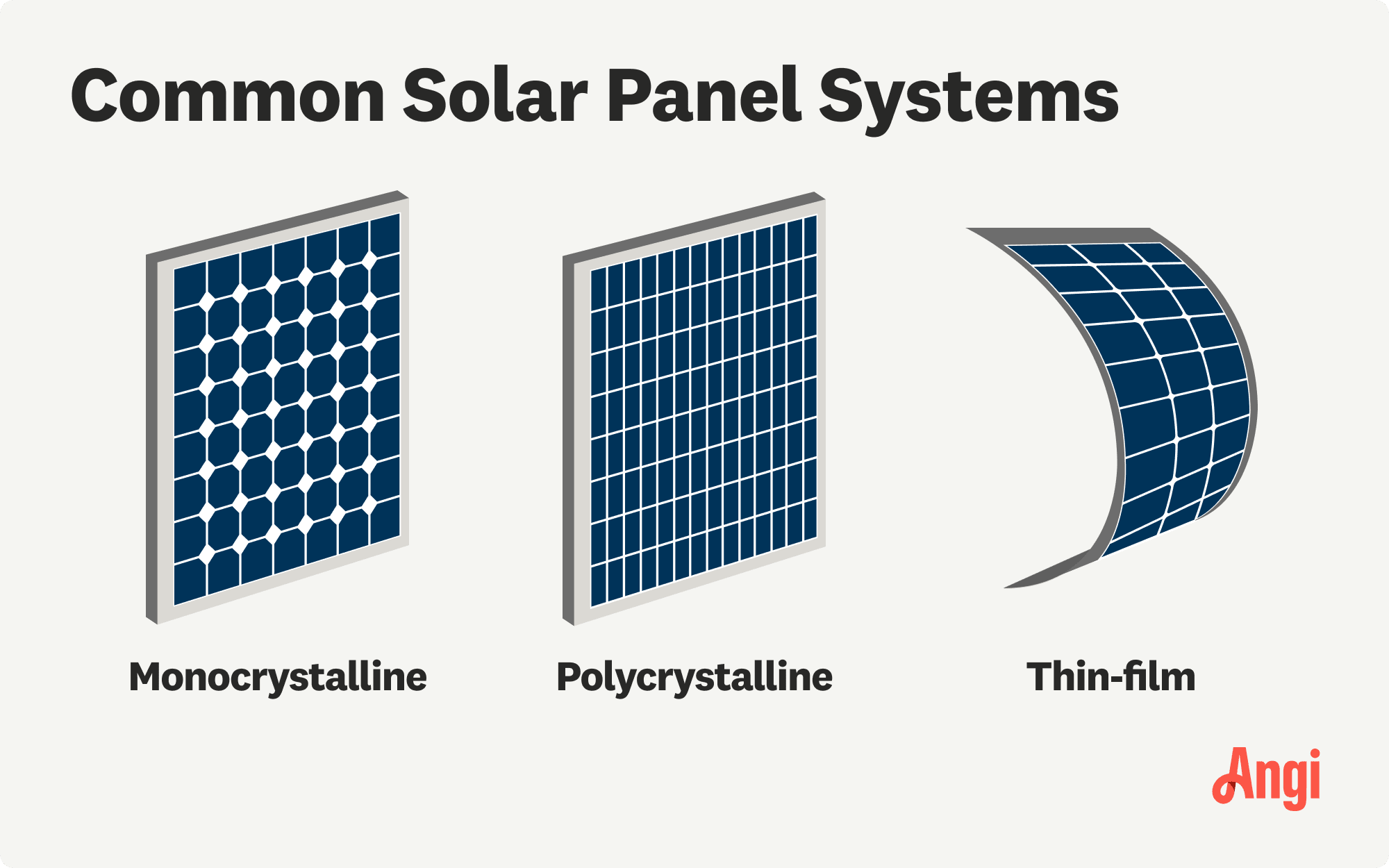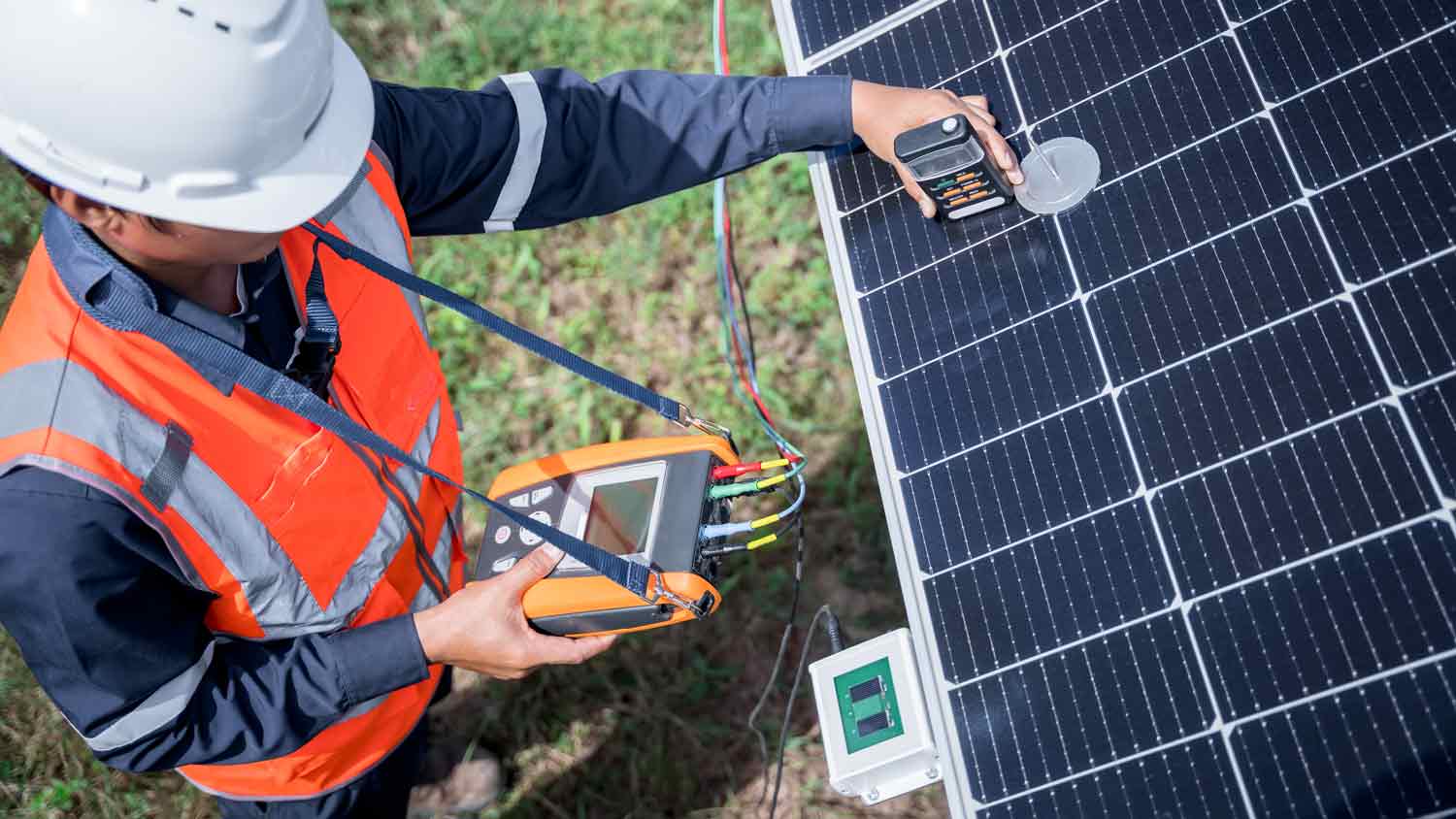
Discover the Tesla Powerwall installation cost, including average prices, cost factors, and tips to help homeowners budget and save on their Powerwall project.
Installing solar panels in Baltimore, Maryland, averages $26,544, though it ranges between $21,315 and $32,354 based on system size, panel type, wattage, and more. A solar panel installer can assess your roof and install your system.


Your solar installation in Baltimore will require hiring a solar contractor and a licensed master electrician.
The Maryland Solar Access Program offers grants to qualified households for solar panel installation.
Baltimore gets about 210 sunny or partly sunny days each year, so there’s plenty of solar energy for your solar panels to capture.
Solar energy is increasing in popularity in Maryland, and if you’re a Baltimore homeowner, you may have considered solar panels to help with electricity costs. Solar panel installation costs in Maryland average $26,544, with a range between $21,315 and $32,354. Estimate your budget for your solar project and get your home running on renewable energy.
The following are the major cost factors to consider when estimating the total cost of your solar panel installation in Baltimore, Maryland.
The size of the solar system will impact your solar panel installation costs. The larger the output, the more you’ll pay. Most homes need 6- to 10-kW (kilowatt) systems, which work out to anywhere from 15 to 34 panels, depending on the wattage.
The table below shows average costs based on the size of your solar system:
| Solar System Size (kW) | Average Cost |
|---|---|
| 5 | $12,200–$17,100 |
| 6 | $14,650–$20,525 |
| 7 | $17,100–$23,925 |
| 8 | $17,200–$27,350 |
| 9 | $21,975–$30,775 |
| 10 | $24,425–$34,200 |
| 11 | $26,875–$37,625 |
| 12 | $29,300–$41,100 |

When choosing the type of solar panel that works best for your home, consider three main factors: efficiency, life expectancy, and design. In Baltimore, where average summer temperatures are below 90 degrees Fahrenheit and cloud cover is not uncommon, monocrystalline or thin-film panels are efficient options.
| Type of Solar Panel | Average Cost per Watt | Lifespan (Years) | Pros | Cons |
|---|---|---|---|---|
| Monocrystalline | $1–$1.50 | 40 | Performs well on days with less sunlight | High cost |
| Polycrystalline | $0.90–$1 | 25–30 | Efficient during moderate summer temperatures | Doesn’t perform as well in cloudy weather |
| Thin film | $0.70–$1 | 10–20 | Performs well in low light conditions | Shorter lifespan, requires more space |
On average, most homes need anywhere from 20 to 25 panels to fully power a home, but this can range from as few as 15 to as many as 34. How many solar panels you need depends on the number of watts per panel, your energy consumption, and the efficiency of your panels. Your average solar panel will have an output of anywhere from 250 to 400 watts. The dimensions of your solar panels will also depend on the power output.
Keep in mind the following costs for solar system hardware when planning your project.
The more advanced the technology, the higher the up-front cost. The type of mount will affect the cost as well:
Fixed mounts: $10–$15 per mount
Adjustable mounts: $50 per mount
Tracking: $500–$3,000 or more per mount (these mounts can self-track sunlight, leading to up to 45% more energy production)
Other materials you will need for a solar energy system include the parts in the table below.
| Hardware | Average Cost |
|---|---|
| String inverter | $1,000–$3,000 each |
| Microinverters | $150–$300 each |
| Power optimizer | $80–$150 each |
| Solar battery | $400–$15,000 |
Inverter and microinverters: Convert direct current (DC) electricity to alternating current (AC) electricity
Optimizer: Regulates currents so each panel is more energy efficient and prevents power loss
Battery: Stores excess energy from the system so homeowners can use it at night or during a power outage
Some systems use a single solar inverter or several microinverters that convert DC to AC electricity. Materials like the wiring and battery are often grouped with the package price unless you opt for add-on services.
Hiring an experienced pro to install your solar panels is key to making the most of this exciting new home addition. Budget $0.50 per watt for labor when you hire a solar panel pro in Baltimore, Georgia. This number doesn’t include permits or the cost of additional technology, such as special mounts, tiles, or shingles.
Solar panel installation does require electrical work. Though many solar panel installation companies have a licensed electrician on staff who specializes in solar panels, roofing contractors sometimes subcontract an electrician. The average cost of hiring an electrician is $60 to $120 per hour.
Your solar installation contractor will apply for and secure the necessary permits for the project. In Baltimore, this includes a residential alteration building permit and an electrical permit. The electrical permit application must be submitted by a licensed and registered master electrician.
After the installation, your contractor will schedule a solar panel inspection, and your system will be approved for use after a successful inspection.
Baltimore sees around 210 sunny or partly sunny days each year. With so much sunpower available, it’s no wonder Maryland is one of the fastest-growing states for solar installations. As more homeowners add solar, homebuyers may prefer homes with well-maintained panels.
If you decide to move forward with this home project, the return on investment for solar panels is about 35%, so you might find the expense worth the benefits. The good news is that a study from Zillow estimates that installing solar panels increases home value by 4.1% if you own the system and it’s in good condition.
Once your solar panels are paid off, they're officially your property. If you move, you can reinstall them on a new rooftop. Alternatively, they can increase the value of your home by 3% to 4% and attract more buyers. They can also give your property a competitive edge in a buyers’ market.
The best way to save money on the up-front costs of installing solar panels is to take advantage of the Solar Investment Tax Credit (ITC) before it ends on December 31, 2025. The ITC allows homeowners to claim a federal tax credit equal to 30% of the price of their solar panel system installation.
For example, if your solar panel system costs $30,000 before the federal tax credit, you can save around $9,000. However, to benefit from this credit, your solar system has to be installed and working before the federal incentive ends.
The ITC, also known as the Residential Clean Energy Credit, was originally extended through 2032 as part of the Inflation Reduction Act. However, new federal legislation (the Big Beautiful Bill Act) signed into law on July 4, 2025, terminated the credit early. The Solar Energy Industries Association® (SEIA) outlines the high-level policy changes and restrictions on energy tax credits.
Additionally, the extra power you choose not to store in a battery can be sent back to the grid. Your local utility company will compensate you for that power, but the amount will vary. You can check the Utility Rate Database on Open EI to estimate how much you can expect to receive for generating excess energy.
The Maryland Solar Access Program offers grants for qualified households based on income requirements. The program covers $750 per installed kW (up to $7,500).
Maryland has a property tax exemption, which means the increase in home value after installing a solar panel system won’t be assessed toward your property taxes. The state also has a sales and use tax exemption for solar panels, so homeowners don’t have to pay the 6% sales tax on qualifying equipment.
You might also qualify for a net metering program so you can send excess energy you don’t use back to the utility company for credit toward electricity bills. Lastly, contact your solar pro and utility company to ask about Solar Renewable Energy Credits (SRECs), which are credits for the amount of energy your panels produce.
Home is the most important place on earth, which is why Angi has helped more than 150 million homeowners transform their houses into homes they adore. To help homeowners with their next project, Angi provides readers with the most accurate cost data and upholds strict editorial standards. We survey real Angi customers about their project costs to develop the pricing data you see, so you can make the best decisions for you and your home. We pair this data with research from reputable sources, including the U.S. Bureau of Labor Statistics, academic journals, market studies, and interviews with industry experts—all to ensure our prices reflect real-world projects.
Want to help us improve our cost data? Send us a recent project quote to [email protected]. Quotes and personal information will not be shared publicly.
From average costs to expert advice, get all the answers you need to get your job done.

Discover the Tesla Powerwall installation cost, including average prices, cost factors, and tips to help homeowners budget and save on their Powerwall project.

Discover the average solar panel inspection cost, what impacts pricing, and how to save. Get expert tips to keep your solar system efficient and safe.

Get a detailed estimate of solar farm costs. Learn about average prices, key cost factors, and ways to save when planning your solar farm project.

Discover the top 10 states with the best infrastructure for solar panels and find out if solar will work for your home.

Planning to install solar panels? You’ll need a solar inverter. Follow this guide to calculate the best solar panel inverter size for your system.

Thinking about switching to solar? Consider the pros and cons of solar energy to decide if it’s right for you. We shine a light on the upsides and downsides.